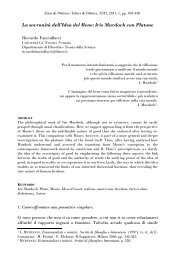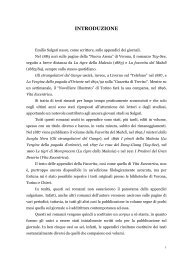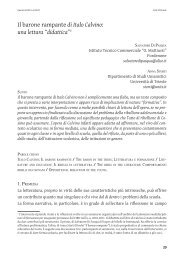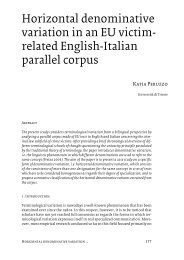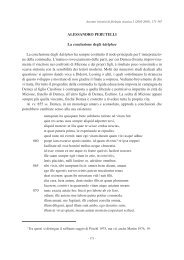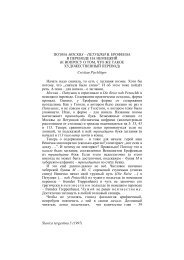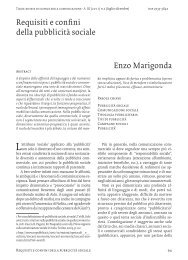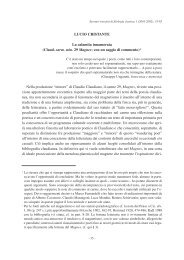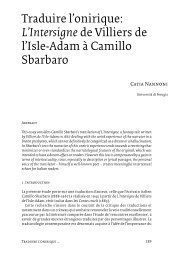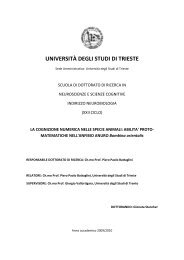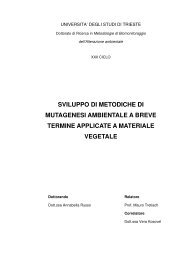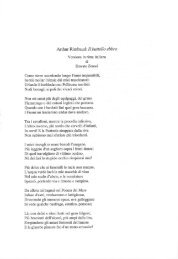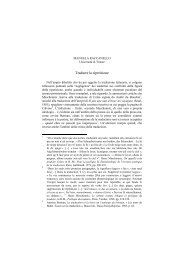UNIVERSITÀ DEGLI STUDI DI TRIESTE - OpenstarTs - Università ...
UNIVERSITÀ DEGLI STUDI DI TRIESTE - OpenstarTs - Università ...
UNIVERSITÀ DEGLI STUDI DI TRIESTE - OpenstarTs - Università ...
Create successful ePaper yourself
Turn your PDF publications into a flip-book with our unique Google optimized e-Paper software.
Chapter 5 – Development of innovative instruments for acquisition of respiratory variables<br />
Figure 5.3 The prototype of the realized device<br />
In order to verify the reliability of the new device a procedure was established for<br />
measuring the volume. This procedure employed a 3-litre calibrating syringe (Fukuda<br />
Sangyo, Japan) and a manually simulated respiratory cycle of approximately 12 acts per<br />
minute for 120 seconds. The volume was calculated by integrating the flow; this operation,<br />
described in [Shaw et al 1976] could introduced a maximum error of 3% that can be<br />
considered satisfactory and within the accuracy of the employed instruments.<br />
In order to study the characteristics of percussive ventilators, after the verification of the<br />
device reliability, a test system was produced. The flow output of a Percussionaire (VDR-4,<br />
Percussionaire Corporation, USA) was connected to a lung-simulator (SMS, Medishield,<br />
UK), presenting variable R/C parameters, through a laboratory measurement system of<br />
respiratory parameters (BIO-TEK, Gas Flow Analyzer VT+ HF) and a Fleisch<br />
pneumotacograph (Type 2, 3 L/sec) to which the new device was connected.<br />
The pressure and flow measures were carried out for 240 seconds, setting up on the VDR-4<br />
a respiratory frequency of 15 acts per minute with I/E 1:1 and a percussive frequency of 800<br />
cycles per minute with job pressure of 25 cm H2O and free expiratory flow. On the lung-<br />
52



